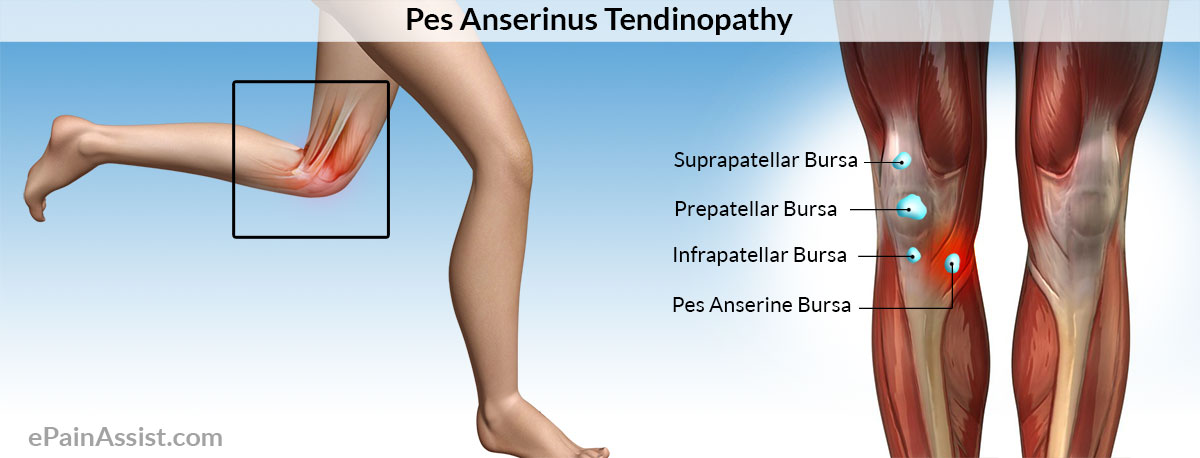A pes anserine injury can often be misdiagnosed as Medial Collateral Ligament (MCL) injury as they are very close to each other giving rise to the possibility of a positive result for MCL injury on valgus stress test in cases of pes anserine injury.
Pes anserine bursitis is caused due to an inflammation of the medial knee. It can occur with other knee disorders too.
About Pes Anserine
Pes Anserine is a tendon which comprises of semitendinosus, sartorius, and gracilis. It is also known by the name of Pes Anserinus and Goose’s foot, These combine and join collectively to shin bone in the inside portion of lower part of knee. There is a bursa present here known as anserine bursa. This anserine bursa lies in the middle of the tibia and the combined tendon. Inflammation of the bursa may result from repetitive friction such as in sports like cycling, running, swimming causing bursitis. A condition called tendinopathy can also develop in the location of combined tendon. Both the injuries may take place simultaneously.[1]
Causes of Pes Anserine Bursitis or Pes Anserine Tendinopathy
- Obesity.
- Over-pronation.
- Valgus deformity of the knee.
- Severe trauma to the knee on the medial side.
- Sportsmen are more prone to this condition.
- Degenerative joint disease of the knee is commonly associated with bursitis.[2]
Signs and Symptoms of Pes Anserine Bursitis or Pes Anserine Tendinopathy
- Pain over the interior and inferior part of the knee.
- Pain with using stairs.
- Swelling of the affected area.
- Pain on resistive bending of the knee.
- Pain with extension of the knee.
- Tightness of the three connected muscles.
- Pain when arising from a sitting position.
- Pain may be present at night.[3]
Treatment for Pes Anserine Bursitis or Pes Anserine Tendinopathy
Treatment should involve treating both the symptoms as well as the root cause resulting in the injury. Conservative measures are used to treat the symptoms like:
- Rest and avoidance of activities that aggravate pain.
- Cold therapy can calm down pain and reduce inflammation.
- Anti-inflammatory drugs to reduce pain and swelling.
- Stretching of the hamstrings, quads, and the muscles of the groin, if necessary.
- Use of ultrasound technique may be helpful.
- Massage therapy is also useful.
- If the above measures fail, then steroid injections may be given.
- If tightness of the hamstring muscles are contributing to this injury, then stretching of these muscles should be done to improve the flexibility.[4]
- https://orthoinfo.aaos.org/en/diseases–conditions/pes-anserine-knee-tendon-bursitis
- https://www.ncbi.nlm.nih.gov/books/NBK532941/
- https://www.researchgate.net/publication/6406768_Risk_Factors_for_Pes_Anserinus_TendinitisBursitis_Syndrome
- https://www.winchesterhospital.org/health-library/article?id=14077
Also Read:

